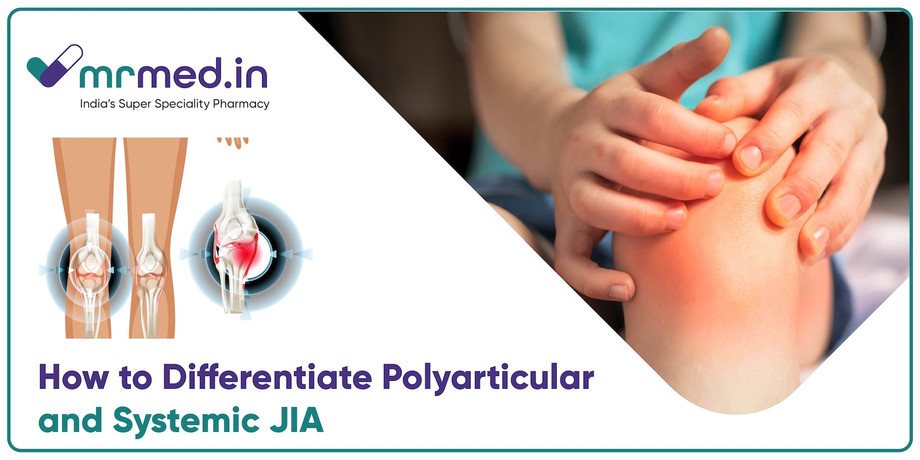Is your child struggling with joint pain, swelling, or fever? You’re not alone. Juvenile idiopathic arthritis (JIA) is more common than most parents realise, and knowing which type your child has can make all the difference in treatment and daily life. Let’s dive into the key differences between polyarticular JIA and systemic JIA, two of the most misunderstood forms of childhood arthritis.
What is juvenile idiopathic arthritis, and how does it affect children?
Juvenile idiopathic arthritis is an autoimmune condition that affects children under 16. It causes persistent joint inflammation, pain, and stiffness. There are different types, each with its own triggers and symptoms. The two major types we’ll focus on here are polyarticular JIA and systemic JIA.
Polyarticular JIA involves five or more joints. It often mirrors adult rheumatoid arthritis. Systemic JIA, on the other hand, can impact the entire body, not just the joints. It may come with fevers, rash, and internal inflammation.
How do symptoms differ between polyarticular and systemic JIA?
Polyarticular JIA typically begins with stiffness in the morning. Children may find it hard to open jars, hold pencils, or walk. It usually affects small joints like fingers, wrists, and knees. The symptoms are often symmetrical, meaning both sides of the body are affected.
Systemic JIA, however, starts with high spiking fevers, sometimes twice daily. These fevers can last for weeks or even months. Alongside this, a pale pink rash may appear. Unlike polyarticular JIA, systemic JIA can affect internal organs like the heart and lungs. It’s far more complex and can be harder to diagnose early on.
Who is more likely to develop each type?
Girls are more likely to develop polyarticular JIA, especially those in early childhood or adolescence. Systemic JIA affects boys and girls equally and can strike at any age, though it often appears in younger children.
Family history may play a role, but JIA is not hereditary. Environmental triggers or immune system issues might also contribute.
Is one type more serious than the other?
Systemic JIA is generally more severe due to its wide-reaching effects. It doesn’t just damage joints—it can lead to life-threatening complications like macrophage activation syndrome. This condition needs immediate medical attention.
Polyarticular JIA, while painful and disabling if untreated, usually doesn’t affect internal organs. However, it can cause long-term joint damage if not managed early and correctly.
How is each condition diagnosed?
Doctors rely on a mix of physical exams, lab tests, and medical history. There’s no single test that confirms JIA. For polyarticular JIA, tests might show elevated inflammation levels and sometimes rheumatoid factor.
Systemic JIA diagnosis depends more on tracking fevers, rashes, and organ inflammation. Blood tests might show extremely high inflammatory markers or abnormal white blood cell counts.
Early diagnosis is crucial in both cases to avoid long-term damage and maintain quality of life.
Can both types be treated the same way?
Not quite. While some treatments overlap, systemic JIA usually needs more aggressive therapy. Polyarticular JIA often responds well to nonsteroidal anti-inflammatory drugs (NSAIDs), physical therapy, and disease-modifying drugs (DMARDs).
Systemic JIA may need corticosteroids to control fever and inflammation quickly. In more resistant cases, biologic medications are used. These medications target specific immune responses and have changed the outlook for many children.
One such medication is Actemra injection, which contains Tocilizumab. It’s a biologic medicine used to treat both systemic and polyarticular JIA by blocking a protein that causes inflammation.
Can children live a normal life with JIA?
Absolutely. With the right treatment plan, regular check-ups, and support, children can live full and active lives. Exercise, proper nutrition, and emotional support play big roles.
Schools often accommodate children with JIA by offering flexibility with physical activities and rest times. Family understanding and peer support make a world of difference, too.
What should parents watch out for?
Keep an eye on joint pain, fevers, rashes, and fatigue that lasts more than two weeks. Track symptoms in a journal. This can help doctors make a quicker diagnosis. Never ignore ongoing morning stiffness or unexplained high fevers.
Also, always communicate changes in your child’s behaviour. Sometimes, the emotional toll of chronic illness can affect them more than the physical pain.
Final thoughts
Understanding the difference between polyarticular and systemic JIA can help you respond faster and smarter. Each child’s journey is unique, but early detection, proper treatment, and emotional care make a massive difference.
No child should suffer in silence. If you suspect JIA, reach out to your paediatrician or rheumatologist. With modern treatments and supportive care, kids with JIA can dream big, play hard, and live well.

